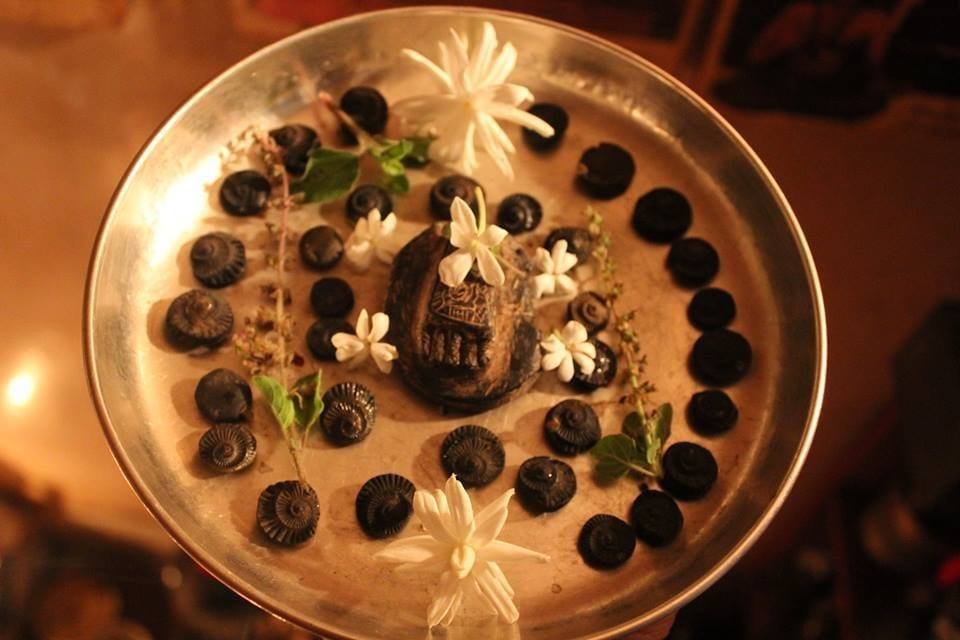
Since I didn't get around to it on #FolkloreThursday, here's a new Shaligram thread for #FossilFriday!
Let's talk about the Vasudev Shaligram! It's an interesting one.
Let's talk about the Vasudev Shaligram! It's an interesting one.

Vaasudev carries a wide variety of meanings depending on the particular Hindu tradition in question. In Indian epic poetry, Vasudeva is the father of Krishna. He was the brother of Nanda Baba, the chieftain of the cowherder tribe... 

...who was a Surasena (an ancient Indian region corresponding to the present-day Braj region in Uttar Pradesh) who also became the foster father of Krishna. 

His sister Kunti was married to Pandu, both significant figures in the Mahabharata. In other interpretations, Vasudeva was a partial incarnation of Rishi Kashyapa (a famous Hindu sage) as well as one of Vishnu’s four vyuha avatars who... 

...received specific attributes or functions of Vishnu but not his entire incarnation (like Anirudda and Pradyumna). Additionally, following the advent of Bhagavatism in the 1st-millennium BCE, the patronymic Vāsudeva (with long ā) has also remained a popular name of Krishna. 

According to Shaligram tradition, the Vaasudev Shaligram is marked by both Śesha (Ananta), the eternal serpent who appeared to protect the infant Krishna as Vasudeva carried him across the river during his flight from the demon Kansa, and... 

...Kalpvriksha, the sacred tree along the river banks. Typically, these Shaligrams are identified using their long oval shapes and the appearance of a central spiral opening representative of the serpent Śesha. 

Ideally, they will then also contain a tree-like marking of grooves or lines somewhere else along the outer surface. 

In practice, Vaasudev Shaligrams are more commonly associated with the stories of Krishna than with Vishnu specifically. As such, they are said to grant enormous physical strength to devotees in times of trial and to encourage all practitioners in their vicinity to...
...adopt stout hearts and minds whenever troubled. This “never give up” atmosphere of ritual veneration also makes them especially popular as gifts to those who are ill or who have recently suffered tragic circumstances in their lives.
Vaasudeva Shaligrams are identified primarily through a combination of features, specifically a round or oval shape, a central spiral opening and other grooved markings representative of tree roots or branches: 

The presence of all three indicating this śila’s association with the story of Vasudeva’s flight from prison with the infant Krishna in a basket in order to rescue him from death at the hands of the demon-king Kansa.
In many interpretations, the overall Shaligram is also said to be generally in the form of a “basket” in shape. 

References: Praanatoshani Tantra pg. 348, Praanatoshani Tantra pg. 361, Skanda Purana, Nagarkhanda, 244: 3-9, Garuda Purana (Panchanan Tarkaratna, Part 1, Ch. 45), Agni Purana; Bengavasi ed., Panchanan Tarkaratna, Saka 1812, Ch. 46
• • •
Missing some Tweet in this thread? You can try to
force a refresh
















